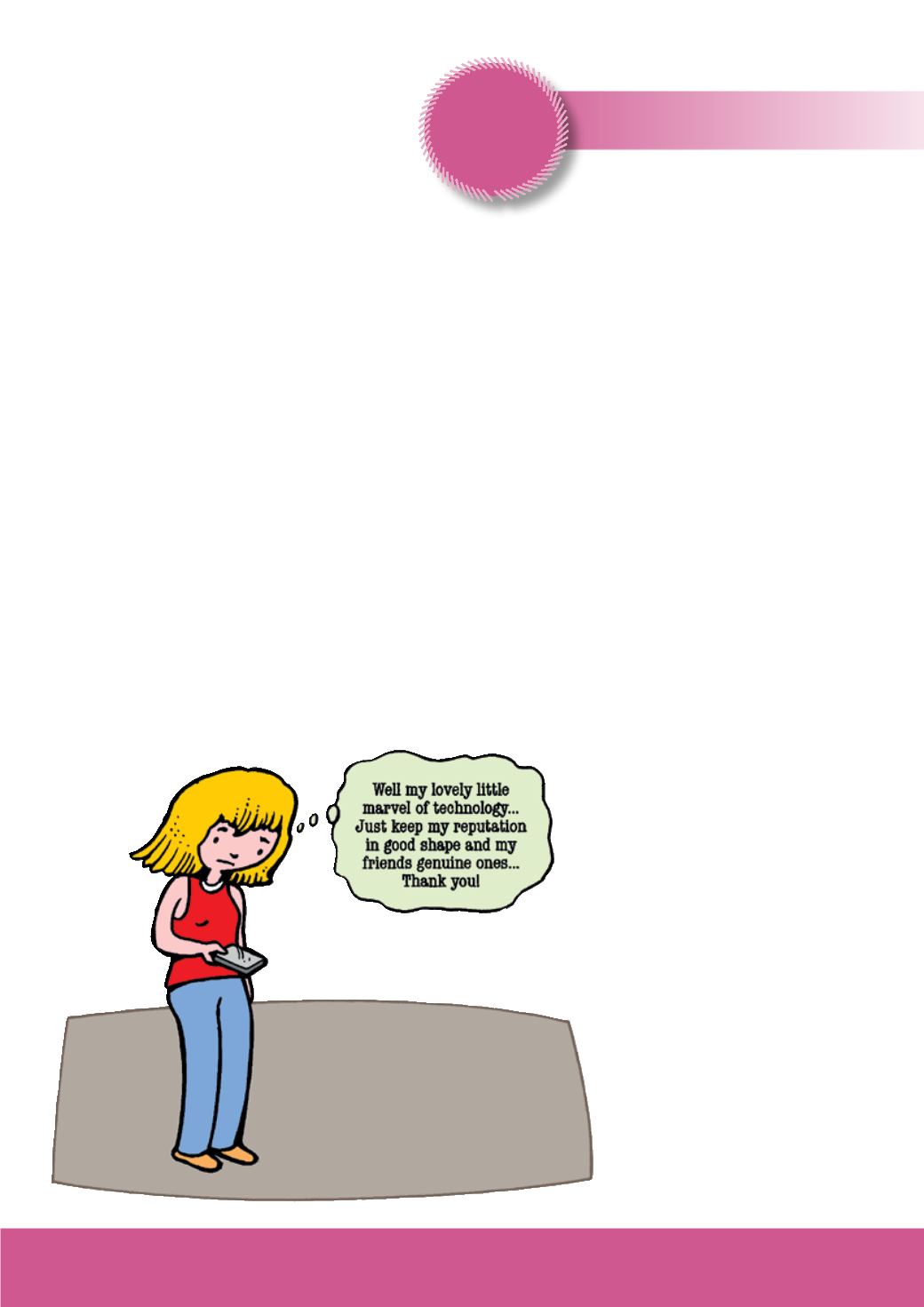
1
Chapter 1: Digital issues
ISSUES
: The Internet of Things
Chapter
1
Digital issues
Youth and the Internet
I
t is sometimes difficult for
older generations to properly
appreciate just how quickly
the environment young people are
growingup in today is beingchanged
by technology. Even relatively young
adults in their thirties came of age
in an era where mobile phones were
the sole preserve of bankers or
wealthier estate agents, whilst the
Internet was an emerging novelty,
slow and periodically accessible via
dial-up modems accessed largely
in institutions rather than the home.
For young people in 2015, though,
life
without
information
and
communications technology seems
as unfathomable and quaint as an
era before sliced bread. Unlike any
previous generation in history, young
people today have instant access to
the sum of human knowledge and
information through the click of a
mouse. This provides unparalleled
opportunities for learning, global
connection and innovation as never
before. But alongside the numerous
benefits bestowed by the Internet, it is
increasingly clear that the potential for
relentless and all-consuming contact
with the virtual world is also presenting
new and unpredictable challenges for
young people.
Something that does not appear to
have changed is the basic challenge
of adolescence with its attendant
emotions, anxiety and obsessions.
Baroness Beeban Kidron’s informative
documentary
InRealLife
(2013) –
looking at this very issue of how
the Internet is impacting on youth –
shows clearly that teenagers today,
speaking in their own words, are still
recognisably teenagers as most of us
would describe them (often from our
own personal experience). What has
altereddrastically, though, is the level of
risk that young people may potentially
expose themselves to when growing
up due to the extremes to which the
consequences of teenage behaviour
canbemagnifiedwhenfacilitatedbythe
Internet. This is illustrated all too clearly
in the film by poignant interviews with
young people reflecting on addictions
to pornography and gaming they have
developed from their Internet use, or,
perhaps most shockingly, the young
woman exchanging sexual favours in
order to retrieve a stolen phone.
Just as in the ‘offline’ world, we are
learning that cyberspacealsopresents
its own bespoke dangers to child well-
being which as a society we are only
just beginning to acknowledge and
react to. And the reality is that it is the
most vulnerable, less likely to have
attentive parents to supervise them,
and often lacking basic education,
who are most exposed to the dangers
that advancing technology poses
– the Internet in particular. These
young people, who have always
been most at risk of problems such
as addiction or exploitation, now
face greater extremes in terms of the
consequences of their actions due to
the Internet. Increasingly, disturbing
case studies of sexual exploitation
and sexual abuse are linked to
Internet ‘grooming’ of vulnerable
young people – not only to facilitate
‘contact’ abuse by arranging to meet
up in real life, but increasingly through
the soliciting of explicit imagery via
social media or the incitement of
sexual activity on webcams. These
are serious safeguarding concerns.
By Jonathan Rallings


